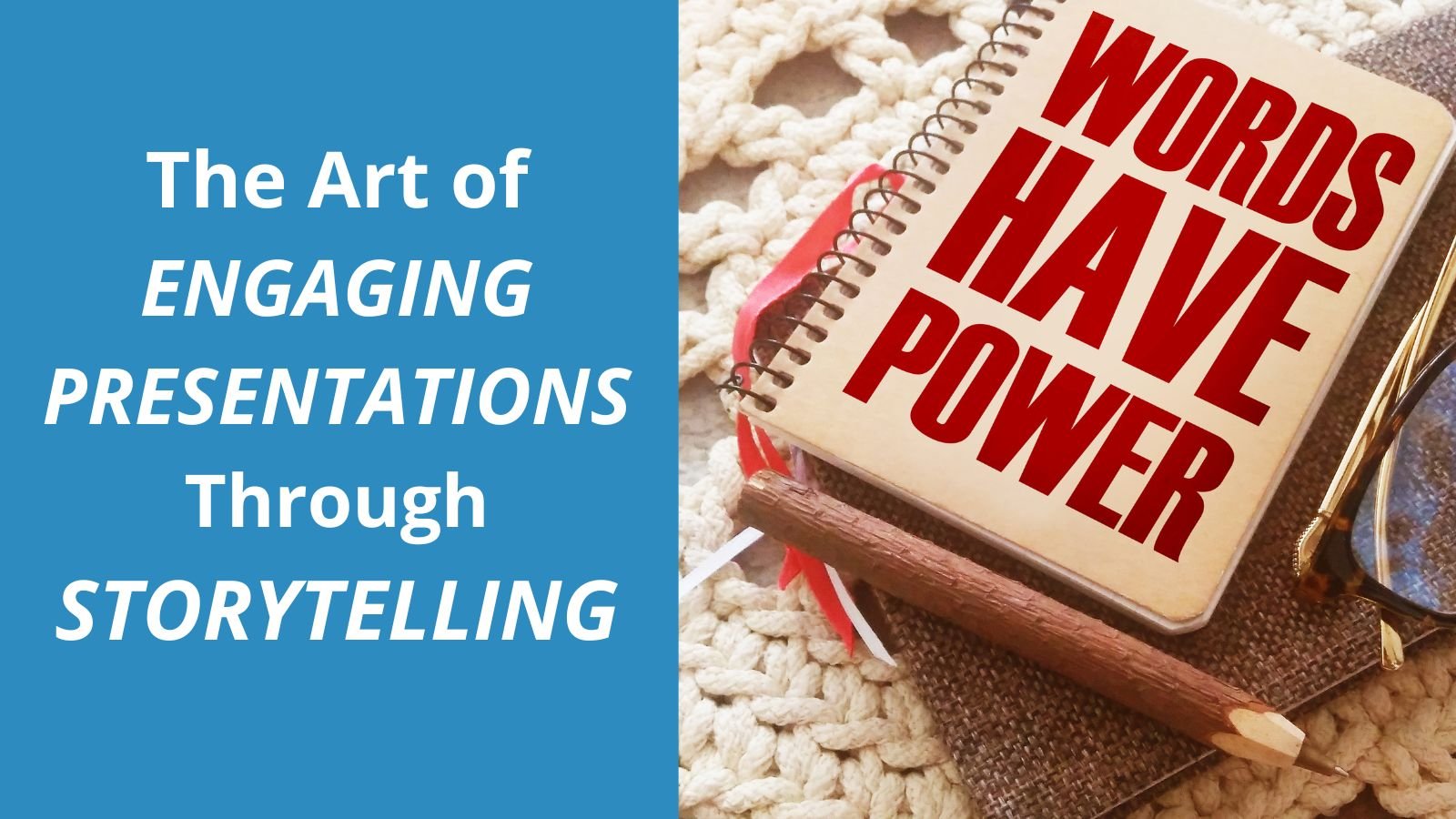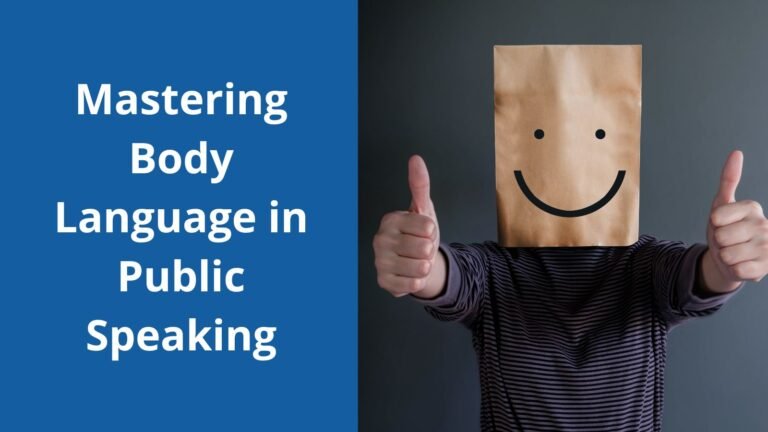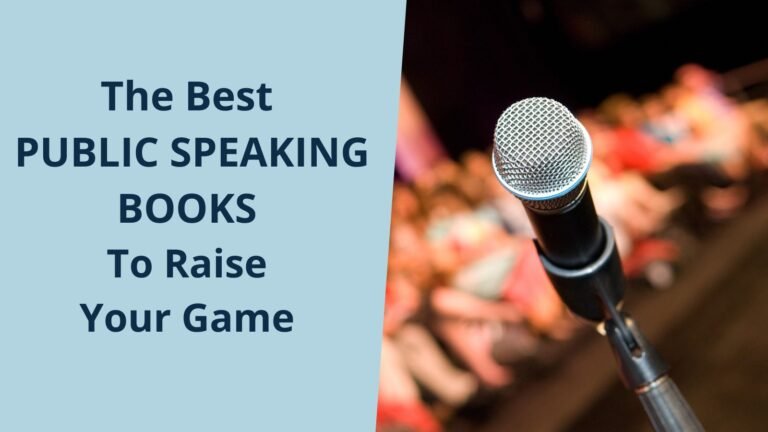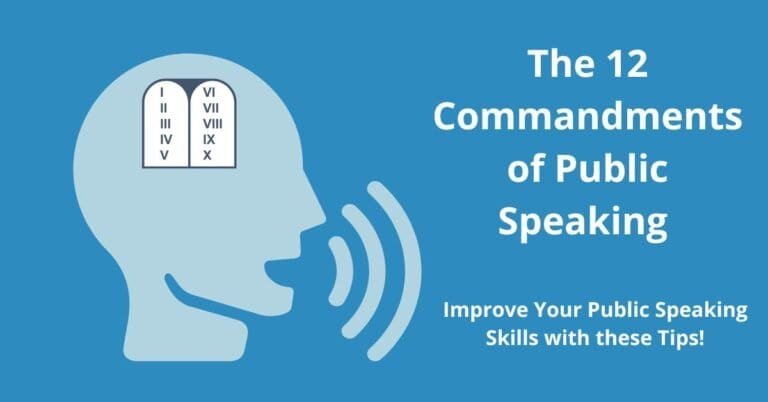The Art of Engaging Presentations Through Storytelling
There’s a proven way to transcend cultures, capture attention, and leave a lasting imprint on the human mind: storytelling. So if you want to be a good public speaker, you really need to learn some storytelling techniques for engaging presentations.
In the modern world, where information often battles attention spans, storytelling emerges to break such barriers, transforming mundane data into vibrant narratives that resonate with the soul. The significance of storytelling techniques in presentations extends far beyond mere words on slides; it’s a direct way to generate engagement, the bridge that connects the speaker’s passion to the audience’s understanding.
Stories have a unique power — they weave emotions, capture imaginations, and create connections. In this article, we embark on a journey through the art of storytelling, exploring its profound impact on audience engagement and retention. We delve into the intricacies of crafting compelling narratives, understanding the essential elements that form the backbone of every gripping tale. From characters that breathe life into your message to emotional nuances that tug at heartstrings, we decipher the secrets of effective storytelling.
Moreover, we unravel the different storytelling techniques that transform presentations from monologues to interactive dialogues. Discover how to elicit emotions, employ vulnerability to create relatability, and incorporate multimedia seamlessly. Join us as we navigate this captivating landscape, where every anecdote, every pause, and every visual aid crafts an unforgettable story. Get ready to master the art of engaging presentations through the timeless power of storytelling.
Crafting Compelling Narratives

Understanding the Elements of a Gripping Story
You have to know that at the heart of every captivating tale lie fundamental elements that transform a narrative from ordinary to extraordinary. Characters, conflict, setting, and resolution form the very essence of storytelling, shaping the emotional journey that resonates with audiences.
Characters
Creating characters that breathe life is an art. Characters need depth and relatability; they should mirror the experiences, fears, and aspirations of your audience. Whether it’s a resilient hero, a conflicted anti-hero, or a relatable everyday person, the audience should connect with their struggles and triumphs. By infusing human qualities into your characters, you invite empathy and understanding, forging a powerful bond between the story and the listener.
One little trick from stand-up? Do you know who is one of the characters easier for you to expose in a presentation? Yourself. You can talk about abstract, general characters in your expositions, and people may feel your connection to them or not. But if you share your own inspirational business story you’ll probably get a better connection. This is a very powerful storytelling technique…
Conflict
Conflict is the engine that drives a story forward. It introduces tension, making listeners eager to discover how the characters will overcome challenges. The conflict could be internal (emotional struggles), interpersonal (relationship dynamics), or external (facing external forces or obstacles). The key lies in making the conflict relatable and consequential.
Audiences invest in stories where the stakes are high and the outcome is uncertain, making them emotionally invested in the resolution.
Setting
A vivid setting is more than a backdrop; it’s a character in itself. Whether it’s a bustling city, a mysterious forest, or a space station in the distant future, the setting should evoke sensory experiences. Descriptive language that paints a picture in the audience’s mind immerses them deeply into the story. A rich setting not only enhances the narrative but also serves as a playground for the imagination.
Resolution
The resolution is the satisfying conclusion that ties up the loose ends. Crafting a memorable resolution is about providing closure while leaving room for contemplation. It’s the moment of catharsis where the audience witnesses characters’ growth or transformation. A well-crafted resolution lingers in the minds of listeners, leaving them with a profound sense of fulfillment long after the story concludes.
Understanding and mastering these elements is the cornerstone of impactful storytelling. By weaving relatable characters, compelling conflicts, immersive settings, and memorable resolutions, your narratives will not only captivate but resonate deeply, leaving an indelible mark on your audience’s hearts and minds.
The Art of Storyboarding: Structuring Your Narrative
In the realm of storytelling techniques, structure is the silent architect, shaping raw ideas into compelling narratives. A well-structured story is akin to a carefully orchestrated symphony, where each note harmonizes to create an unforgettable melody. In presentations, this symphony is the result of meticulous storyboarding, a process that imbues your narrative with coherence and resonance.
A structured narrative provides a roadmap for both the storyteller and the audience. It ensures that your tale flows seamlessly, capturing attention and maintaining engagement from beginning to end. A clear structure prevents the story from meandering, focusing the listener’s attention on the essential elements, leading to a more profound impact.
The classic story arc, with its exposition, rising action, climax, falling action, and resolution, serves as the backbone of countless successful narratives. Applying this arc to presentations creates a natural flow that captivates audiences. The rising action introduces the conflict, creating intrigue, while the climax, the story’s pinnacle, sparks anticipation and excitement. The resolution then offers closure, leaving listeners with a satisfying conclusion.
Tension and suspense are the lifeblood of engaging stories. Techniques like foreshadowing, dramatic irony, and well-timed revelations keep audiences on the edge of their seats. When used judiciously, these elements evoke curiosity and anticipation, enhancing the emotional impact of your narrative.
The opening sets the stage, inviting the audience into the story’s world. Whether it’s a compelling quote, a thought-provoking question, or a captivating anecdote, the opening should grab attention and establish a connection. Similarly, the conclusion is your final opportunity to leave a lasting impression. Crafting a conclusion that echoes the story’s themes and emotions reinforces the narrative’s impact, ensuring that your message lingers in the minds of your listeners.
Visual aids are the storyteller’s tools, enhancing the narrative’s depth and resonance. From evocative images that set the mood to charts and graphs that illustrate data-driven points, visuals provide a multi-sensory experience. Integrating these aids seamlessly amplifies the emotional and intellectual impact of your story, ensuring that your message is not just heard but deeply felt.
Incorporating these storyboarding techniques into your presentations elevates your storytelling from mere words to an immersive experience. By structuring your narrative with precision, utilizing the classic story arc, infusing tension and suspense, crafting impactful openings and conclusions, and enhancing your story with visuals, you transform your presentations into compelling tales that resonate, inspire, and endure in the hearts and minds of your audience.
Engaging Through Emotional Connection
Eliciting Emotions: The Heart of Every Compelling Story

Emotions are the currency of storytelling, the thread that weaves a deep connection between the storyteller and the audience. Understanding the profound impact of emotions in narratives is essential for crafting presentations that resonate on a visceral level.
Stories, at their core, are emotional experiences. They tap into universal feelings, making the audience not just understand but feel the narrative. Whether it’s joy, empathy, fear, or sadness, the emotional resonance of a story creates a profound impact, making the message unforgettable.
Crafting a compelling story involves the strategic elicitation of emotions. For instance, joy can be triggered by sharing moments of triumph, empathy by narrating personal struggles, and fear through tales of challenges overcome. By understanding the emotional triggers, storytellers can guide the audience’s emotional journey, ensuring a powerful response.
A nuanced story embraces both positive and negative emotions. It’s the balance between hope and despair, love and loss, that mirrors the complexities of real life. This balance deepens the emotional impact, allowing the audience to experience a wide spectrum of feelings, enriching their connection with the narrative.
Some of the most impactful presentations are born from emotional narratives. Consider Martin Luther King Jr.’s “I Have a Dream” speech, which resonates with hope and conviction, or Malala Yousafzai’s accounts of bravery amid adversity, evoking both empathy and inspiration. These examples showcase how emotional storytelling techniques transforms messages into movements, motivating action and change.
Incorporating these storytelling techniques into your presentations transforms them into emotional journeys. By understanding the emotional power of stories, evoking specific feelings, balancing positive and negative emotions, and drawing inspiration from real-life examples, your presentations become not just informative events but emotionally charged experiences that leave a lasting imprint on your audience’s hearts and minds.
The Power of Vulnerability: Making Personal Stories Resonate
In the realm of storytelling techniques, authenticity is the heartbeat, and vulnerability is the soul. Personal narratives, when shared with genuine emotion and openness, possess an unparalleled power to captivate audiences and forge deep connections.
Authenticity lends stories a raw, unfiltered quality that resonates with listeners. When storytellers embrace vulnerability, revealing their genuine emotions and experiences, it creates an immediate rapport with the audience. Vulnerability establishes a shared human experience, breaking down barriers and fostering empathy.
The art of vulnerability lies in striking a balance between openness and discretion. While sharing personal anecdotes, it’s crucial to maintain boundaries, ensuring that the storyteller feels comfortable without divulging excessively intimate details. This delicate balance preserves the storyteller’s privacy while allowing the audience to connect deeply with the shared experiences.
Personal stories, when skillfully woven into broader themes, become universal. They cease to be singular experiences and transform into relatable narratives that echo the audience’s own lives. By drawing connections between personal stories and universal themes, storytellers create a collective experience, inviting listeners to reflect on their own journeys.
The key to eliciting empathy lies in the storyteller’s ability to evoke emotions authentically. When the audience senses the storyteller’s vulnerability, they naturally empathize, projecting their own experiences onto the narrative. Encouraging relatability involves crafting stories that tap into shared emotions and challenges, fostering a sense of community and understanding.
Embracing authenticity and vulnerability, while delicately sharing personal anecdotes and connecting them to broader themes, transforms storytelling into a profound, empathetic experience. By baring one’s soul with courage and sincerity, storytellers invite audiences into their world, fostering connections that transcend the spoken words, leaving a lasting impact on hearts and minds.
Enhancing Engagement Through Interactive Narratives
Interactive Storytelling: Involving the Audience

In the tapestry of storytelling techniques, interactivity is the vibrant thread that weaves the audience into the narrative, transforming a presentation into a shared experience. Interactive storytelling not only captures attention but also fosters active engagement, making the audience active participants in the unfolding tale.
Interactive storytelling transcends the traditional speaker-audience dynamic. It transforms presentations into dialogues, where the storyteller and the audience co-create the narrative. By actively involving the audience, a presentation becomes a dynamic, living entity, adapting and evolving based on real-time interactions.
Polls, Q&A sessions, and open-ended questions are powerful tools in the interactive storyteller’s arsenal. Polls gauge audience opinions, creating a collective reflection on the topic. Q&A sessions invite curiosity, allowing the audience to steer the discussion. Open-ended questions provoke thought, encouraging deeper reflections. These techniques not only involve the audience but also provide valuable insights, enhancing the narrative’s richness.
While a well-crafted script forms the backbone of the narrative, spontaneous interactions inject vitality. A delicate balance between scripted segments and unscripted audience interactions ensures a seamless flow. The interplay between planned narratives and spontaneous discussions creates a dynamic presentation, keeping the audience engaged from start to finish.
The audience’s responses are the compass guiding the storyteller. By keenly observing reactions, the narrative can be adapted on the fly. Addressing specific questions or concerns raised by the audience tailors the story, making it relatable and personalized. This adaptability transforms the presentation into a bespoke experience, where every listener feels seen and heard.
Incorporating interactive elements, from polls to spontaneous discussions, elevates storytelling from a monologue to a vibrant dialogue. By involving the audience, balancing scripted segments with spontaneity, and adapting the narrative based on responses, interactive storytelling transforms presentations into immersive, participatory experiences, leaving a lasting impression on both the storyteller and the audience.
Using Multi-Media: Amplifying Your Storytelling Impact
In the digital age, storytelling techniques transcends words; it embraces a rich tapestry of multimedia elements that elevate narratives to new heights. Leveraging multimedia isn’t just a choice; it’s a strategic imperative to captivate modern audiences and etch stories into their memory.
Videos, images, and audio clips are potent storytelling tools. Videos evoke emotions through moving visuals, while images create powerful visual imprints. Audio clips, from interviews to sound effects, add depth to the auditory experience. Integrating these elements amplifies the narrative, making it a sensory journey.
Infographics, charts, and animations visually distill complex information, making it digestible. Infographics present data in an engaging manner, charts offer visual comparisons, and animations bring stories to life. Integrating these methods ensures information is not just heard but also seen, enhancing audience understanding.
The key lies in balance. Multimedia should complement, not overshadow, the narrative. Each element should serve a purpose, enhancing the story’s essence. Seamless transitions, thoughtful placement, and synchronization with the spoken words create a harmonious blend where multimedia enhances rather than distracts.
Examining presentations that masterfully integrate multimedia provides invaluable insights. TED Talks often exemplify this synergy, where speakers seamlessly weave videos, images, and animations into their narratives. By studying these examples, storytellers can understand the art of multimedia integration, gleaning inspiration for their own presentations.
Integrating multimedia isn’t merely a technological choice; it’s a strategic one. When harnessed thoughtfully, videos, images, animations, and data visualizations elevate storytelling, transforming presentations into immersive, unforgettable experiences. By leveraging multimedia elements and mastering their integration, storytellers create narratives that not only resonate but reverberate, leaving a lasting imprint on the hearts and minds of their audience.
.
Conclusion: Mastering the Art of Storytelling Techniques for Engaging Presentations

In the realm of presentations, storytelling isn’t just a technique; it’s the heartbeat that gives life to ideas and transforms ordinary talks into unforgettable experiences. Throughout this exploration, we’ve delved into the nuances of storytelling — from understanding the fundamental elements of a gripping tale to incorporating multimedia seamlessly. Each technique, whether it’s the power of vulnerability, interactive engagement, or multimedia integration, adds a layer of depth, captivating audiences and etching the message into their minds.
Remember, the art of storytelling is a skill that refines with practice. It’s not just about the words spoken; it’s about the emotions evoked, the connections forged, and the ideas that linger long after the presentation ends. By implementing these techniques in your upcoming presentations, you’re not just conveying information; you’re crafting an immersive journey, inviting your audience to walk beside you through the narrative.
As you embark on this storytelling adventure, embrace the transformative impact it holds. With each tale woven, you’re not just a presenter; you’re a good storyteller, shaping narratives that resonate. Practice, refine, and let your stories echo in the minds and hearts of your listeners. In the world of presentations, stories aren’t just told; they’re felt, and that’s the true magic of mastering the art of engaging presentations through stories.
If you want to become a great public speaker, dont forget to read my article on the 12 Public Speaking Commandments to improve your public speaking skills!







